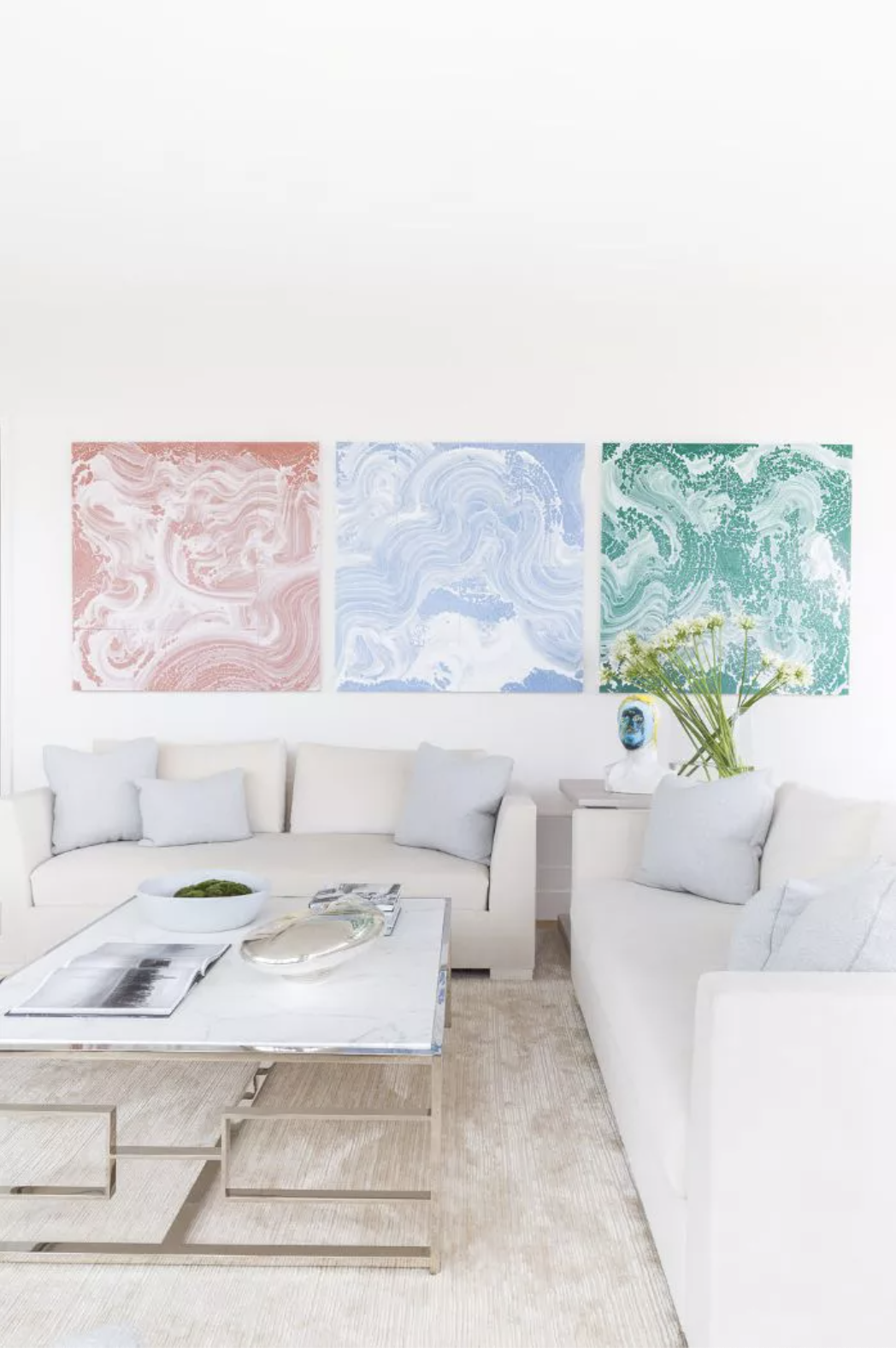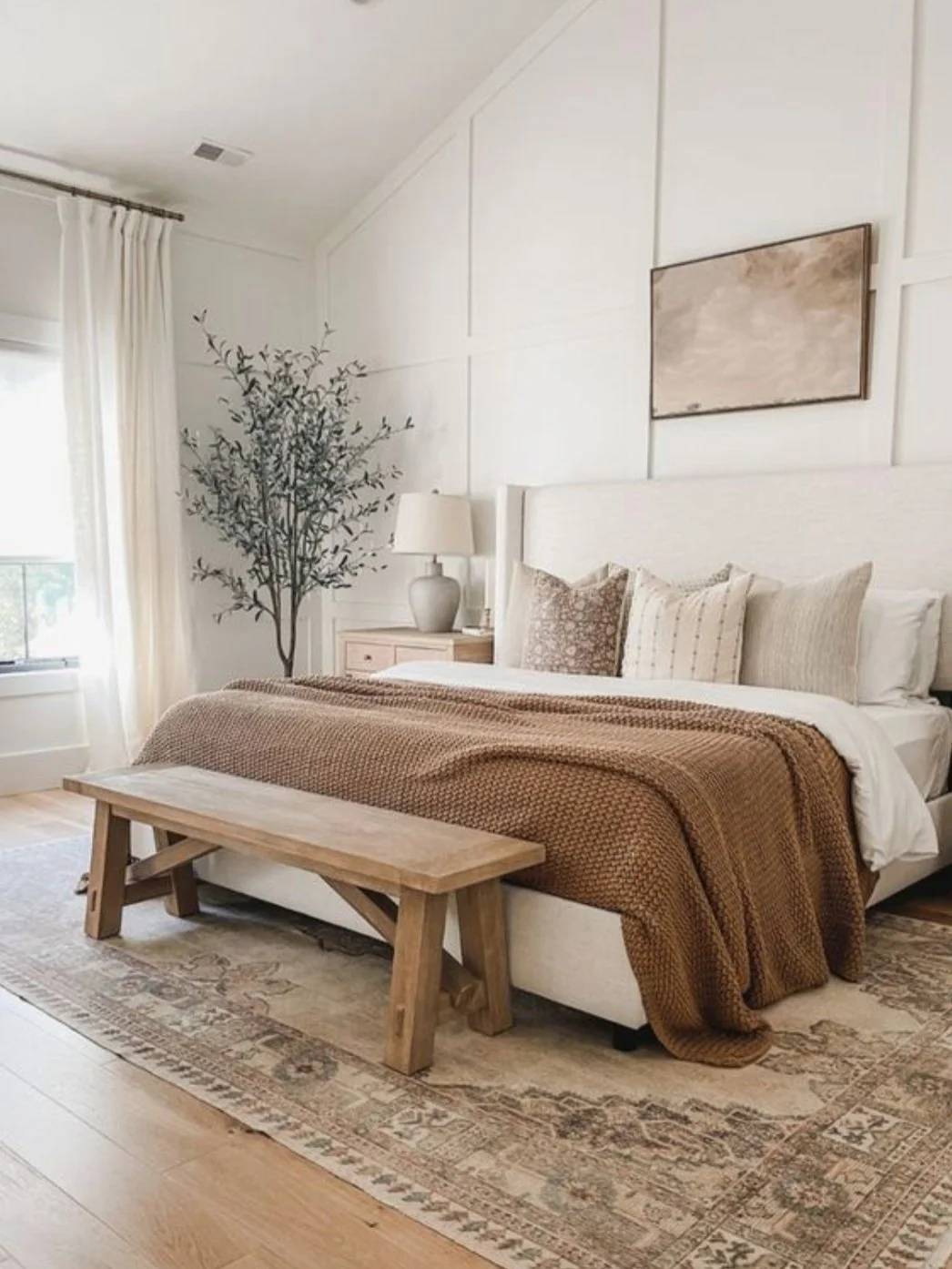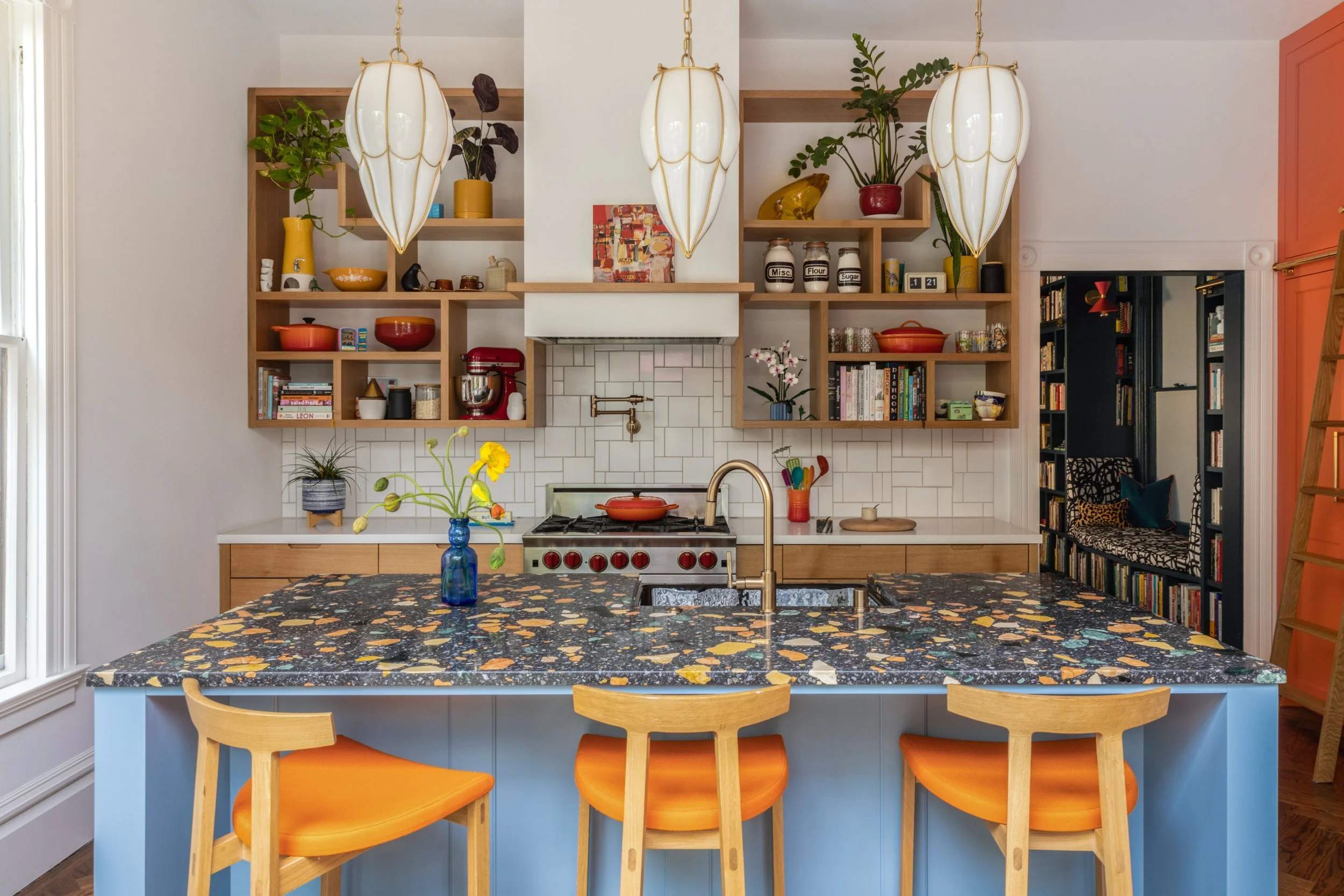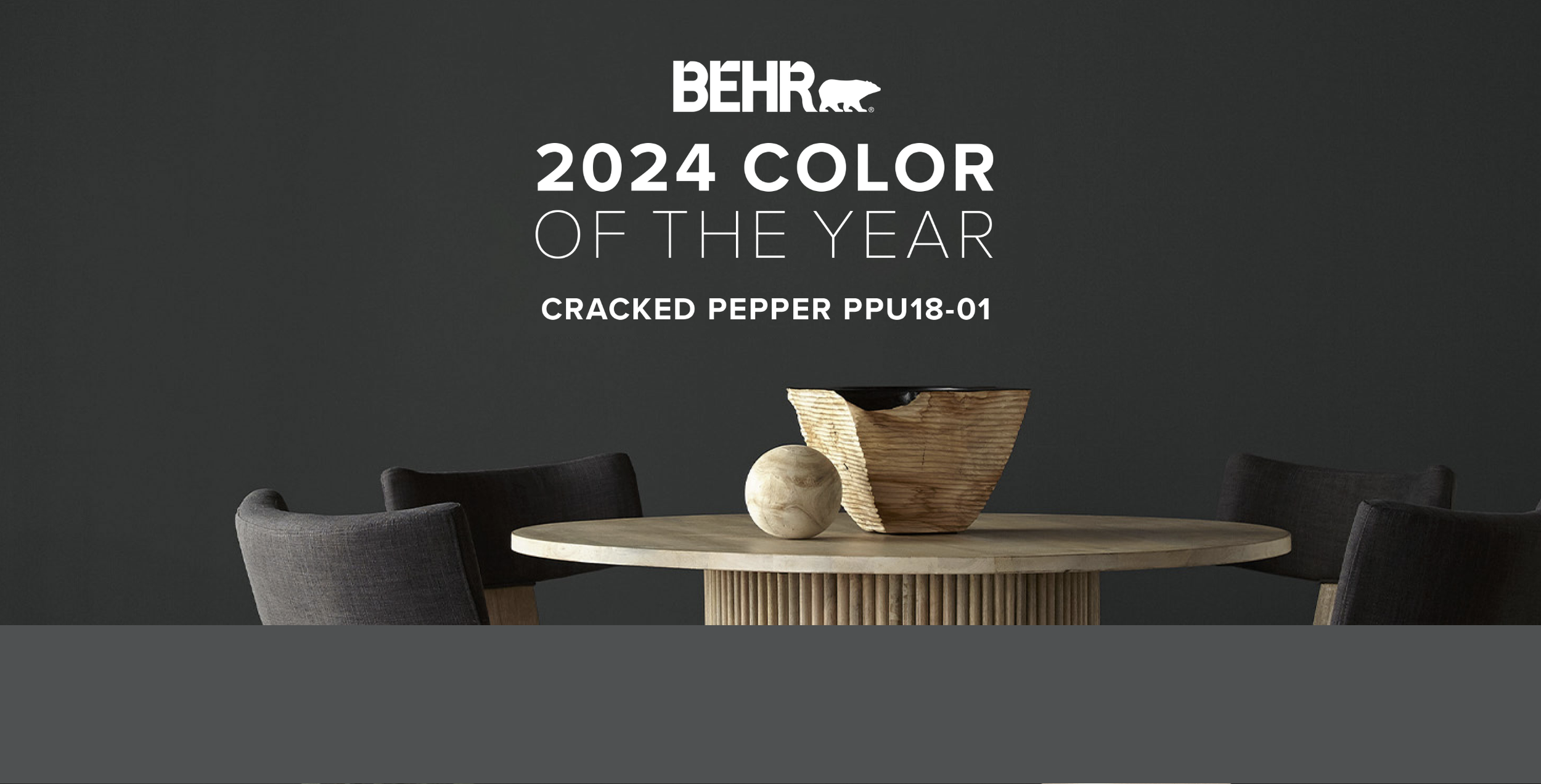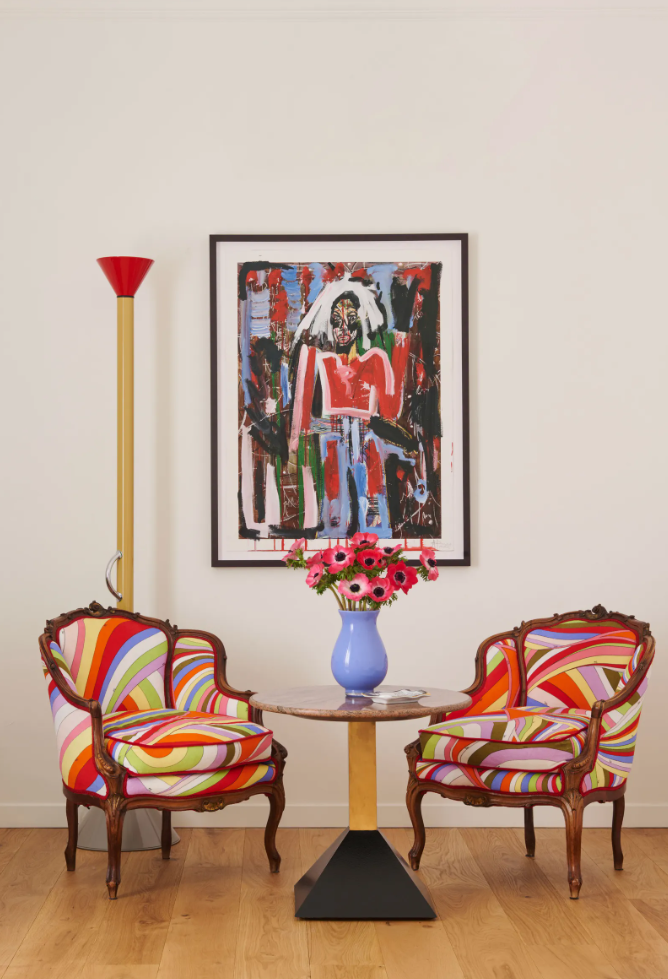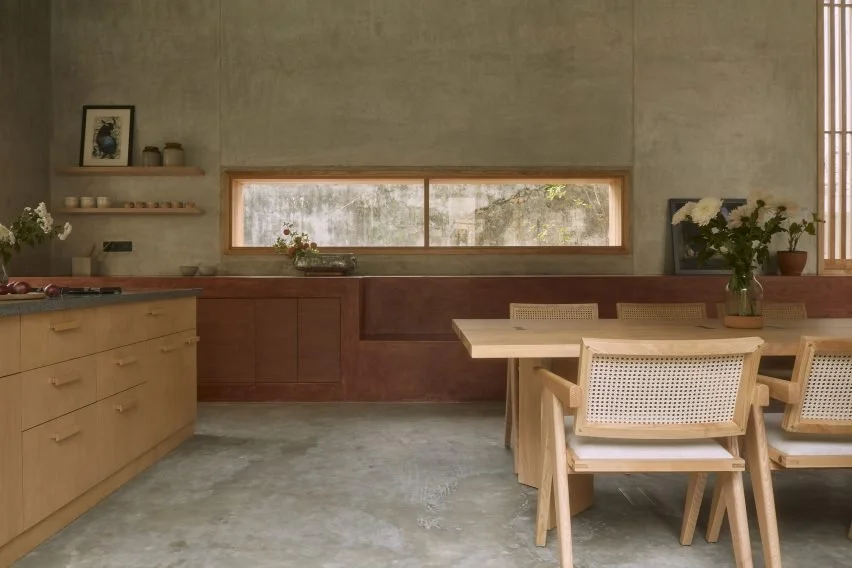The Spectre of White Boucle and New Maximalism
Something is haunting me. It’s white, bulbous, misshapen. It’s unavoidable. I encounter it everywhere I go.. it lingers in the corners of the room..
Wait it’s not a ghost. It’s a white boucle chair. And I’m scared of it.
Ranch House by Jenni Kayne
Who’s scared of a chair?! Me. Because it represents a period of design where spaces without personality proliferated and became a norm. In response to the global tumult of the early 2020s, interiors trended towards neutral spaces with little personality. But as global tensions and cultural trends ease (or we stop caring so much), naughty, naughty Maximalism is on the rise and bringing to the surface all that made us push it away. At its core, maximalism embodies a series of traits that have not been popular in recent years: appropriation, unapologetic joy, pride, and excess. But interiors have always followed political and social movements, particularly maximalism’s categoric recurrence after periods of conformity, and it’s a sign we’re all ready to remember the joys in life.
I started noticing more and more white boucle chairs during the pandemic, right around the time I was noticing a similar cultural ascent of the “soullessly white” interior. *Carrie Bradshaw voice* Had everyone had these white homes before but never showed them? Were people just sharing more home content now that they were locked down? Am I the sole victim of aggressively targeted ads because I’m stuck in my own home?
This was quickly disproved by the flood of advertising campaigns and rush of home makeover content featuring the soon-to-be-ubiquitous white boucle chair (alongside boucle headboards, stools, and sofas) in perfectly sparse, blindingly dull spaces. Amongst my friends, the white boucle chair was to become symbolic of the snooze-inducing homogeneity gripping interior design. White rooms with sand colored linen duvets, woven baskets with vague origins, faintly patterned fabrics, bleached floors, and windows without treatments, accented by a fluffy Scandi chair in the corner, was IT. That was it. As far as Manhattan to Salt Lake City – the most boring and basic interiors dominated design. Part of this probably proliferated around the debut of Studio McGee’s Netflix series - but something else was driving this massive embrace of the style.
I mean, the spaces check every “well designed interiors” box: incorporating textures, mixing materials, layered styling, well-placed accessories, large-scale art. And that’s why its persisted, but at closer glance they’re elements without interest, that together somehow become less interesting. Interiors are physical representations of who people are and how they live their lives. So I was left wondering whose life is genuinely lived in these spaces? I realized, they aren’t - but could see how they ended up there. There are so few markers of the lives within that they’re seemingly devoid of personality, as if to populate an aspirational prop home for who people feel they should be. This is an interior in which the personality follows, not leads.
NYC Condo by Chantal Lamberto
Salt Lake City project by Studio McGee
As searches for white boucle chairs began to rise in early 2020, (thanks Google trends), the spread of Covid-19 (March 2020) and the BLM movement (May 2020) were at their apex, that’s enough to consider America as being in sensitive, fragile times. But there were also the still-smoldering embers of the #MeToo movement, and the rise of cancel culture following Trump’s term (PEW did its first research study into cancel culture in September 2020), the uncertainties and effects of the pandemic, deepening partisan politics, and racial and gender inequalities coming to head. Simultaneously we all felt lost about how to navigate life forward, while having our own ideas about how to handle these escalating issues. And everyone staunchly believed their ideas were right. We all felt the pressure that we’re required to participate in something. Remember the black squares on our Instagram feeds? And the blue lives matter bumper stickers? The atmosphere was electric, awaiting the smallest flint to catch fire. And people did want revolution, but most people just wanted to get through.
Our social lives also changed dramatically. We couldn’t leave the house, so we all turned online. (Or turned the TV on. This is why I turned to QVC – it is blasphemous to say a single negative thing and there’s no politics.) A study by University of Pennsylvania found that in the first wave of Covid-19, there was a 60% increase in social media usage (!!). We were watching, commenting, sharing, and creating more than ever; seeking advice, entertainment, inspiration, humor – humanity. And in quarantine, homes became our center of life, and also the primary backdrop of much social media. Interiors were getting a lot of attention.
Albert Hadley designed apartment in New York City
When you take an extra minute to consider all the individual elements of a successful interior, things can start looking problematic. And the stripping away of certain “problematic” elements in this over-sensitized moment of culture led to this soulless space trends.
We’ve become really culturally sensitive to appropriation of all forms; it’s a fuzzy line between inspiration and appropriation. But in reality, all things are entrenched in some type of cultural history.
Let’s take pattern: from the Persian Paisleys, Indian Palampores and Ancient Roman Herringbones to the Chinese Chinoiserrie (which was already appropriated then reinvented by Europeans); all speak of some past-life. Even something as seemingly innocuous as color is not exempt; from walls lacquered in “Prussian Blue” or swathed in Farrow & Ball “India Yellow.” Let’s also remember Lacquering is an ancient Chinese process.
Kendra Scott’s Lake Austin Home by Fern Santini
I’m scared to bring up furnishings: Moroccan poufs, Rattan side tables (the word ‘rattan’ is Sanskrit for ‘cane’), and Memphis Milano side tables are ridden with historical origins. Persian rugs? Plantation shutters? Paper lantern pendants? I’m also equally terrified of touching on interior architecture. We’ve got Roman columns, Japanese courtyards, and American Southwest Viga beams running amok. And this is us seeing the tip of the iceberg off in the distance.
My point is not to break down the origins of these elements; that’s a job for someone else; but to display the myriad influences global culture has on design. Sometimes design can be seen as disregarding these origins, thoughtlessly selecting the pretty parts of a culture for the sake of vanity. And no one wanted their zoom background to feature an out of context imported relic hanging on their wall.
With sensitivies heightened, so design began to strip itself away to create a new world. One with nothing to argue over, one without political factions or government ordinances, without reminders of problems. With an abundance of caution, and nothing to offend. Bright white as if to say, “I am clean. I am unsullied.” When having a personality became touchy, spaces followed suit and became devoid. None of the whitewashed spaces feature any of the aforementioned - there is no ornamentation, there is no color, no strong forms or informed accessories. But in taking so much away - in attempting to become ‘neutral’ - you become nothing.
The white boucle chair has been around since the 1970s, but the “big box adoption” - ie when contemporary retailers start knocking it off in tandem – took a bit longer. Gwyneth may have been the first in 2018 with CB2s “Gwyneth” version - but it only became an official bestseller in 2021. Alongside the Gwyneth’s ascent, its design trickled down to Urban Outfitters, Target, and even Amazon, the land of cheap overseas products. Comfy and white, in tones like ‘linen’ and ‘oatmeal’ - it was the perfect accent to these devoid spaces. Accessibility + trendiness = ubiquity.
Maximalism flounders when it breaks the social code. The socio-political climate brought all the awful things happening in the world to the forefront, and imposed ideas and order equally upon us; maximalism shirks that narrative by demanding wonder and surprise by being different. It opposes neutrality and calmness, and brims with life. It incites joy. And nothing pisses people off more than another’s happiness in their time of pain or struggle. As the world crumbled, there was little desire to see other’s flaunt their happiness, energy, vivacity. Unlike the “neutral” interiors emerging in response to the times, maximalism is oblivious.
Lower Haight Iconic by Noz Nozawa
The idea of neutrality and the urge to be as in-offensive as possible has slowly stifled creativity, but the winds of trends are shifting. The pandemic is “officially over” – and life is buzzing forward. As we re-emerge, with it comes the realization that it’s not possible to be completely exempt from criticism, or to be politically correct all the time. It’s exhausting trying to be everything to everyone. And now, with a wave of new projects and designers (like Noz Nozawa, above) come to the fore, maximalism is unapologetically re-introducing itself.
Behr’s Color of the Year series is an exemplary visual timeline of these shifts; earthen and pastel tones disintegrating into white, until 2024 busted out as the diametrical oppposite to all that came before. It’s interesting to consider this full-stop shift to embracing the dark and moody. It can’t go unsaid that neutrality became so popular in opposition to what maximalism is. Trends equally signify both a shift towards something and a shift away.
Notoriously maximalist Dorothy Draper wrote a book in 1939 called “Decorating is Fun!” (1939) and she says that the first rule of decorating is (all caps) "COURAGE." Her interiors for The Greenbriar hotel are infamous. They’re magnificent and fantastical – implacable in their whimsy, and clearly brimming with ideas. You need courage to go against the grain, break design rules, and push the limits. Maximalism, done well, is truly creative expression, and most importantly, it’s done with the intention to incite feelings. Maximalism relights the sparks of individuality, of expression, of inspiration, and of joy. You can’t copy a maximalist room at all, let alone in the same capacity that a neutral interior can be copy-pasted. And bringing everything back to context, social movements were gathering members left and right, enforcing conformity, while maximalism emphasizes individuality.
Greenbrier Hotel by Dorothy Draper
The impending Maximalist resurgence was affirmed by this year’s Kipps Bay Showcase. Of course it’s a showcase, but given free reign to design a space, designers went hard to exude the vivacity and joys of life. It just felt like interiors were getting fun again. As we all begin to to acknowledge origins and cultures, and honor them, we’re safely able to publicly enter this maximalist realm.
Kipps Bay Bedroom by Mary McDonald Inc.
Kipps Bay Parlor by Ghislaine Viñas
But I also think we’ll see a type of New Maximalism emerge. New Maximalism gratefully embraces the cultures of the world; it’s an amalgamation of our world which can often feel tribalist but in reality is more interconnected than at any other point. We should be celebrating that culture inspires us, makes us more empathetic - not trying to live in a world where we are so afraid of offending someone, that we don’t even try to understand. New Maximalism takes a more curated (ie thoughtful) “appropriation” of elements, like this stunning apartment I found on the AD homepage sourcing images for this literal sentence. Let’s not forget that styles always exist somewhere among certain defiant groups, but trends are about whats featured.
Home of Camille Miceli via Architectural Digest
I’m excited to see more interiors that reflect our ability to celebrate differences, not use them against each other. We’re all trying to be better people, citizens, humans - and the pandemic forced us reevaluate our positions in this world and relationships to our surroundings. Let’s have new dialogues! Let’s not be afraid to ask each other questions, and learn from each other! We have had enough divisiveness. After all, maximalism is a celebration of differences and demonstrates how when they’re brought together, things of beauty emerge.
Vignette by Jett Projects
PSA: I can’t morally write this piece without saying that there is nothing wrong with a neutral interior. In fact, successful minimalism and luxe neutrality are incredibly difficult to achieve. When done well, they’re stunning, filled with personality, evocative of the owners, and a signal of status in themselves. Minimalism is chic. It’s about pieces with purpose. Modernism, often cited alongside minimalism, uses clean lines, neutral colors, and functional furniture. Both post-war movements, minimalism responded to the uncertainties of life by focusing on extreme simplicity of form and function. Modernism was about embracing experimentation with materiality and space. Neither are devoid of personality; they lead with intention. See two beautiful interiors below:
The Steinman House, Malibu built by architects Craig Ellwood and Jerrold Lomax in 1956, designed by Michael Boyd
The Cabin House, Bangalore, by Taliesyn studio.

